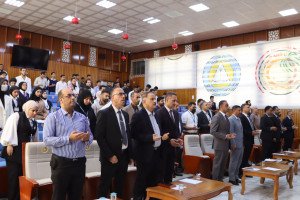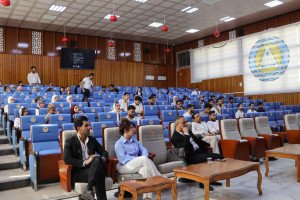
A master's thesis in the College of Engineering at the University of Basrah discussed (analysis of fracture toughness using slit displacement and scale program) The thesis presented by the student Sarah Ali Khudair dealt with the consideration of WEDM (wire-cutting electrical discharge manufacturing) as one of the most important unconventional manufacturing technologies of the century Twenty one. The present work experimentally evaluates the fracture toughness of low carbon steels using a testing machine Tensile Instron 100KN. The applicability of the experimental method for compressive tensile (CT) sample testing is demonstrated. In accordance with ASTM E 399-Width (W) equal to (2) with pre-crack using electric discharge manufacturing for wire (WEDM) instead of the indicated ASTM E3 90-9 pre-fabricated cracking and numerically thru benefit from one of the capabilities of the ANSYS Finite Element Program. The capabilities of the Finite Element Method were used The aim of this thesis is to examine the effect of wire electrical discharge manufacturing (WEDM) on Low carbon (mild steel) commercial unit flexible plastic fracture toughness, and see if WEDM may be used in place of the specified ASTM 1290-E Pre-Crack Fatigue Method to insert a pre-crack into a compressed tension specimen. The thesis concluded that the theoretically estimated linear stress intensity factor in the elastic region analyzes produced excellent results that were very close to the numerical results with an error rate ranging between (3.9%-7.8%), while the experimental stress intensity factor produced results with a high error rate compared to the theoretical results. Noting that WEDM added HAZ heat affected zone especially in the crack tip region, causing weakness in this region.







